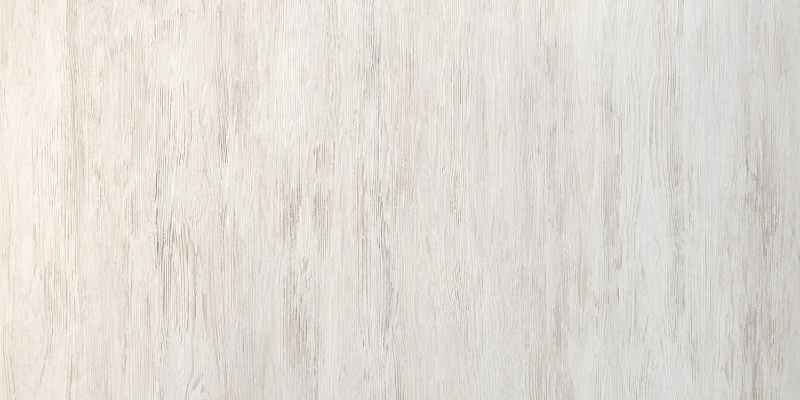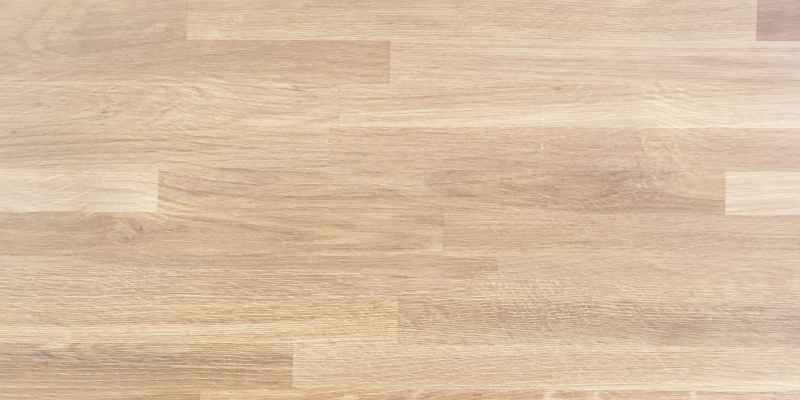Light wood is called balsa wood. It is the lightest and softest timber commercially used, known for its buoyancy.
Light-colored wood, such as balsa wood, pine, and birch, is popular for various projects due to its lightweight nature. These woods offer versatility and aesthetic appeal, often used for furniture, crafts, and construction. Light wood tones create a clean and airy atmosphere, making them ideal for Scandinavian-inspired designs.
Additionally, light-colored woods like sapwood and heartwood exhibit pale shades ranging from white to light brown, adding a touch of elegance to any space. Whether you’re looking for inexpensive options or delicate textures, light woods provide a range of choices for your next project.
The Mystery Of Balsa Wood
Balsa wood, known for its lightweight and buoyancy, is often referred to as the lightest commercially used timber. Perfect for various projects, this soft wood offers efficient heat and sound insulation, making it a popular choice for crafting and construction.
Balsa wood, also known as Ochroma pyramidale, is a unique type of wood that has garnered attention due to its remarkable properties. Despite its lightweight nature, balsa wood is extraordinarily strong, making it a popular choice for various applications. Its exceptional buoyancy and insulation properties further add to its appeal. Let’s dive into the intriguing characteristics and uses of balsa wood.
An Introduction To Balsa Wood
Balsa wood, derived from the balsa tree, is considered one of the lightest and softest commercial timbers. It is native to South and Central America, as well as the Caribbean. This wood has been a staple in various industries, including aviation, due to its outstanding strength-to-weight ratio.
Characteristics Of Balsa Wood
Balsa wood exhibits an unusually high degree of buoyancy and provides efficient insulation against heat and sound. Its lightweight nature, coupled with impressive strength, makes it ideal for use in model making, as well as in the construction of lightweight furniture and crafting projects.
Advantages Of Balsa Wood
Balsa wood, also known as light wood, comes with diverse advantages. As the lightest commercial timber, it exhibits exceptional buoyancy and insulation properties against heat and sound. Ideal for various projects due to its lightweight and cost-effectiveness.
Lightweight And Buoyant
Balsa wood is known for being extremely light and having high buoyancy properties due to its low density.
Efficient Insulation Properties
Balsa wood offers efficient insulation against both heat and sound, making it a desirable choice for various applications.
When it comes to choosing light wood materials, balsa wood stands out for its incredible benefits.
Common Uses Of Balsa Wood
When it comes to lightweight wood, balsa wood takes the lead. Known for its buoyancy and insulation properties, balsa wood is a popular choice for various applications. Let’s explore some of the common uses of balsa wood:
Model Making
Balsa wood is a go-to material for model makers due to its lightweight nature and ease of shaping. Whether it’s for constructing miniature houses, airplanes, or ships, balsa wood provides the perfect balance between strength and weight. Its softness allows for intricate detailing, making it a preferred choice for hobbyists and professionals alike. Furthermore, its natural light color adds an aesthetic appeal to the finished models.
Aerospace Industry
In the aerospace industry, weight plays a crucial role in the design and efficiency of aircraft. That’s where balsa wood comes in handy. Its exceptional strength-to-weight ratio makes it an ideal choice for constructing lightweight structural components. Balsa wood is commonly used for wing spars, ribs, and fuselage frames, contributing to the overall weight reduction of the aircraft. Moreover, its insulation properties help in preventing heat and sound transmission, ensuring a comfortable flying experience.
Other Uses
In addition to model making and aerospace applications, balsa wood finds its purpose in various other fields. Some of the other common uses of balsa wood include:
- Creating prototypes and mock-ups in the product design industry
- Constructing core materials for composite structures
- Crafting lightweight furniture and decorative items
Overall, balsa wood’s exceptional lightness, strength, and versatility make it a valuable material in numerous industries. Whether it’s for artistic endeavors or engineering projects, the unique properties of balsa wood continue to make it a top choice for many professionals and enthusiasts.
Comparison With Other Woods
Light wood, often referred to as light-colored wood, includes varieties like balsa, pine, and redwood. Let’s compare these woods based on different factors.
Balsa Wood Vs. Pine
- Density: Balsa wood is exceptionally light and soft compared to the slightly denser pine wood.
- Usage: Balsa wood is commonly used in lightweight projects and model making, while pine is favored for furniture and cabinetry.
- Color: Balsa wood has a pale, almost white color, whereas pine can vary from yellowish to whitish with visible knots.
Balsa Wood Vs. Redwood
- Weight: Balsa wood is significantly lighter than the heavier redwood, making it ideal for applications where weight is a crucial factor.
- Durability: Redwood offers greater durability and longevity compared to the softer balsa wood.
- Cost: Balsa wood is generally more affordable than redwood due to its lightweight nature.
Incorporating Balsa Wood In Design

Balsa wood, known for its lightweight and buoyant properties, is excellent for incorporating into designs. This softwood is perfect for projects requiring efficient insulation against heat and sound, making it a popular choice for various applications. With its light and versatile nature, balsa wood is a cost-effective option for creating durable and aesthetically pleasing designs.
Scandinavian-inspired Design
When it comes to incorporating balsa wood in design, one style that stands out is Scandinavian-inspired design. This design style embraces simplicity, minimalism, and natural elements, making it a perfect match for light-colored woods like balsa. Scandinavian design focuses on creating spaces that are functional, airy, and full of light, and balsa wood plays a key role in achieving this aesthetic.
With its natural lightness and pale color, balsa wood effortlessly blends with the clean and neutral color palette often seen in Scandinavian interiors. Its lightness adds to the overall sense of airiness and openness in the space, creating a calming and inviting atmosphere.
Creating An Airy Aesthetic
Balsa wood’s lightweight properties make it an excellent choice for creating an airy aesthetic in interior design. Whether it’s used for furniture, wall panels, or decorative accents, balsa wood adds a touch of elegance and sophistication to any space.
By incorporating balsa wood in furniture design, you can achieve a visually light and delicate look. Its soft grain and pale color bring a sense of warmth and tranquility to the overall design, making it an ideal choice for bedrooms, living rooms, or dining areas.
The versatility of balsa wood allows it to be easily incorporated into various design elements. From floating shelves to pendant lights, adding touches of balsa wood can instantly transform a room, making it feel more spacious and inviting.
Balsa wood’s natural grain pattern adds a unique texture to any design, complementing a wide range of interior styles. Whether your space is modern, rustic, or eclectic, balsa wood’s subtle beauty will enhance the overall aesthetic.
Exploring Light Wood Varieties
Discover the allure of light wood varieties—explore the world of balsa, known for its lightweight and buoyant nature. Embrace the versatility of pine, a cost-effective option ideal for creating rustic pieces like farmhouse-style tables.
Types Of Pale Wood
There are several types of light wood that offer a wide range of options for various projects. Some popular types of pale wood include:
1. Balsa: Balsa wood is renowned for its lightweight and soft characteristics. It is so light that it’s buoyant, making it ideal for crafting model ships, airplanes, and other delicate structures.
2. Pine: Pine is an inexpensive and lightweight wood that varies in color, ranging from yellowish to whitish with brown knots. It is often used for rustic or farmhouse-style furniture due to its natural charm.
3. Birch: Known for its light color and smooth texture, birch wood offers a clean and elegant look. It is commonly used for cabinetry, flooring, and furniture.
4. Poplar: Poplar wood is another affordable and lightweight option. It has a pale yellow appearance and is often used for interior trim, molding, and as a substitute for hardwood in certain applications.
5. Maple: Although maple wood comes in various shades, lighter varieties are popular for their versatility and durability. It is commonly used in furniture, flooring, and cabinetry.
Properties And Characteristics
Light wood varieties share some common properties and characteristics that make them desirable for different projects. Here are a few key features:
1. Lightweight: As the name suggests, light wood varieties are known for their low density and weight. This makes them easy to handle, transport, and work with, especially for DIY enthusiasts.
2. Buoyancy: Certain types of light wood, such as balsa, have exceptional buoyancy. This property makes them ideal for applications that require good flotation, like model construction or watercraft.
3. Insulation: Light wood species offer efficient insulation against heat and sound, making them suitable for applications that prioritize energy efficiency and noise reduction.
4. Aesthetics: Pale wood varieties bring a unique, clean, and airy aesthetic to any space. They can make interiors appear brighter and more inviting, making them popular choices for Scandinavian-inspired designs.
5. Cost-effective: Light wood varieties are often more affordable compared to heavier hardwoods, making them a budget-friendly option for projects with cost constraints.
In conclusion, light wood varieties offer a wide range of options for different projects. From balsa to pine, birch to maple, these pale woods bring their own unique properties and characteristics to enhance the aesthetic appeal and functionality of various applications. Whether you’re looking for a lightweight, buoyant material for model-making or an affordable, elegant option for furniture, light wood varieties have got you covered.
Selecting Light And Sturdy Woods
Light wood is often referred to as “pale wood” or “light-colored wood. ” Types of light wood include balsa, pine, and other softwoods that are lightweight and inexpensive. These woods are commonly used in furniture and construction projects to achieve a clean and airy aesthetic.
Balsa Wood As A Lightweight Option
Balsa wood is renowned for its lightweight nature, making it an excellent choice for a variety of projects. It is the lightest and softest timber used commercially, exhibiting remarkable buoyancy and efficient insulation against heat and sound.
Light But Durable Wood Types
If you are looking for a wood type that is both light and durable, there are a few options to consider. Pine, for example, is an inexpensive and lightweight wood that is commonly used for rustic pieces. It takes paint well, making it ideal for children’s furniture.
Another versatile option is birch, which offers a light-colored wood with excellent durability. Birch is known for its attractive grain patterns and resistance to moisture and decay.
Poplar is another light yet durable wood variety. It possesses a straight grain and is easy to work with, making it a popular choice for woodworking projects.
Why Choose Lightweight Woods?
The selection of lightweight woods can bring several advantages to your projects. Firstly, their lighter weight makes them easier to handle and transport, reducing the strain on your body.
Additionally, using lightweight woods can be cost-effective, as they are often less expensive than heavier wood types. This makes them an appealing choice for those looking to complete projects on a budget.
Furthermore, the natural light color of many lightweight woods can add an airy and clean aesthetic to your space. It is why pale woods are a staple component of Scandinavian-inspired design.
Conclusion
When it comes to selecting light and sturdy woods, balsa wood stands out as an incredibly lightweight option. Additionally, woods such as pine, birch, and poplar offer a balance between weight and durability. Consider these wood types for your next project and enjoy the benefits they bring.
Implications In Construction And Projects
What is light wood called? The type of wood that is lightweight and perfect for some projects is called balsa wood. Balsa wood is known for its high buoyancy and insulation properties against heat and sound.
Benefits Of Lightweight Woods
Lightweight woods, such as balsa and pine, offer various advantages for construction and projects.
- Enhanced Maneuverability: Lightweight woods are easier to handle and transport on construction sites.
- Cost-Effective: They are typically more affordable compared to heavier wood materials, reducing overall project costs.
- Efficient Insulation: These woods provide insulation against heat and sound, enhancing comfort within structures.
- Versatile Usage: Lightweight woods like pine are suitable for various projects, from furniture making to structural applications.
Use Of Redwood In Construction
Redwood is a popular choice in the construction industry due to its durability and aesthetic appeal.
- Durability: Redwood is known for its natural resistance to decay and insects, making it a long-lasting building material.
- Visual Appeal: Its rich color and grain patterns add a touch of elegance to architectural designs.
- Environmental Sustainability: Redwood is a renewable resource, making it an eco-friendly option for construction projects.
- Structural Strength: Redwood’s strength and dimensional stability make it suitable for load-bearing applications.

Frequently Asked Questions On What Is Light Wood Called
What Is Very Light Wood Called?
Very light wood is called balsa. Balsa wood is extremely lightweight and even buoyant for various projects.
What Type Of Wood Is Lightest?
Balsa wood is the lightest type of wood commercially used. It is extremely lightweight, buoyant, and offers excellent insulation against heat and sound.
What Wood Is Lightweight And Cheap?
Balsa wood is both lightweight and cheap. It is buoyant and provides efficient insulation against heat and sound.
What Are The 3 Types Of Wood?
The three types of wood are Softwood, Hardwood, and Engineered Wood. Softwoods are not necessarily soft, and Hardwoods are not always hard.
Conclusion
Light wood is known for its versatility and light weight, making it ideal for various projects. Pine and balsa wood are popular choices for their affordability and strength. Incorporating light-colored woods can give a space a clean and airy aesthetic.
Consider these options for your next woodworking project.


